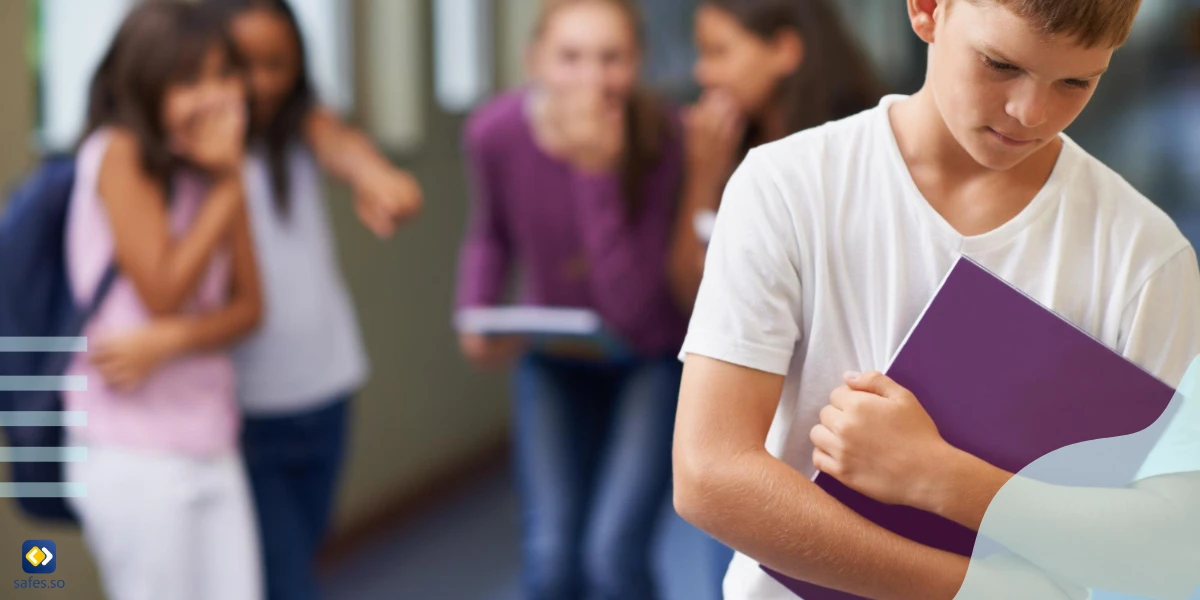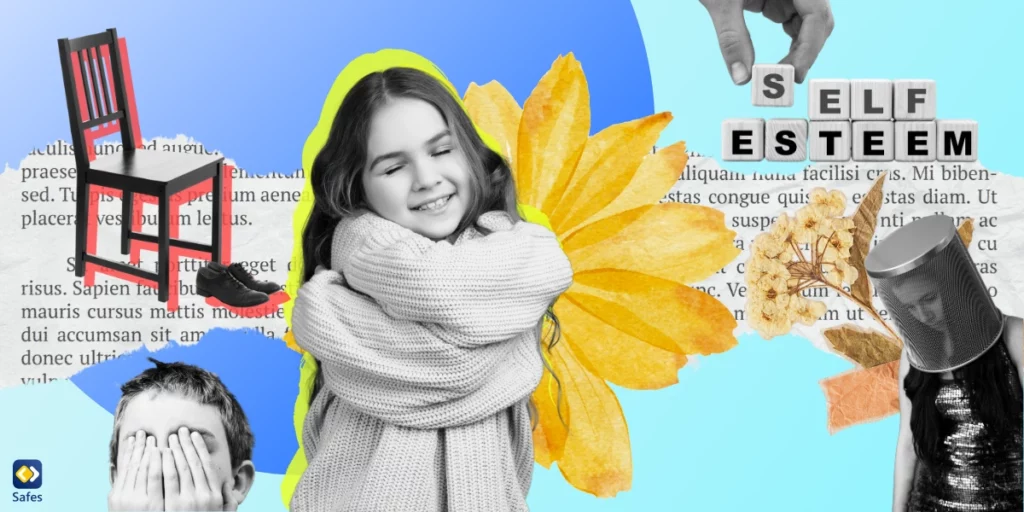As an educator, you understand the profound impact self-esteem has on a student’s overall well-being and academic success. However, recognizing and addressing low self-esteem can be challenging in today’s fast-paced and high-pressure educational environment. Fear not, as this blog post aims to provide you with practical strategies and insights on how to fix low self-esteem in your students and elevate their confidence to new heights. Together, let’s empower our students to believe in themselves and reach their full potential.
Download and Start Your Free Trial of the Safes Parental Control App
Understanding the Signs and Symptoms of Low Self-Esteem
Self-esteem examples can often be observed within a classroom setting. Students with low self-esteem may exhibit various behavioral and emotional indicators, including:
- Reluctance to participate in class discussions
- Avoiding eye contact
- Being overly apologetic
- Struggling with decision-making
- Having difficulty accepting compliments
- Frequently engaging in negative self-talk
It’s crucial for you as an educator to understand why self-esteem is important since it influences not only academic performance but also social interactions and mental health. Students with low self-esteem may have trouble concentrating on their studies, leading to lower grades and a lack of motivation. They may also struggle to form friendships, as they might find it difficult to assert themselves and communicate effectively. Not to forget that low self-esteem can contribute to mental health issues, such as anxiety and depression.

Causes of Low Self-Esteem
Low self-esteem can stem from various internal and external factors that influence students’ perceptions of themselves, their abilities, and their worth. By recognizing these factors, you can better support students on their journey toward building healthy self-esteem.
Internal Factors
Negative Self-Talk: Students with low self-esteem often engage in negative self-talk, where they automatically think negatively about themselves and their abilities. This self-critical mindset may prevent them from taking risks, trying new things, or fully engaging in the learning process.
Comparison: It’s natural for students to compare themselves to others, but when they continually measure their self-worth based on others’ achievements, it can lead to a decline in their self-esteem. Encouraging students to focus on their personal growth and progress can help combat this damaging habit.
Perfectionism: Perfectionism can cause students to set unrealistic expectations for themselves, leading to feelings of inadequacy and low self-esteem when they inevitably fall short. Teaching students that making mistakes is a normal part of learning can help alleviate the pressure to be perfect.
External Factors
Peer Pressure: The desire to fit in and be accepted by their peers can cause students to suppress their true selves or engage in behaviors that don’t align with their values. You need to encourage open communication and foster an inclusive classroom environment to help them feel more comfortable and confident in their own skin.
Bullying: Bullying is a significant external factor leading to low self-esteem. Students who are bullied may feel helpless, isolated, and unworthy. So, it’s crucial to create a safe learning environment, address bullying incidents promptly, and offer support to both the victim and the perpetrator.
- Related Article: Types of Abuse in Schools: Protocols for Prevention & Response
Unrealistic Expectations: Students may experience low self-esteem when they feel overwhelmed by unrealistic expectations from parents, teachers, or even society at large. Encouraging students to set achievable goals and celebrating their accomplishments can help boost their confidence and self-worth.

Strategies to Improve Self-Esteem in Students
Now that we know the signs, symptoms, and causes of low self-esteem in students, we can explore various strategies on how to fix self-esteem in students, equipping them with the confidence and resilience needed for academic and personal success. By implementing these approaches, you can foster a supportive learning environment where every student feels valued and empowered to reach their full potential.
Promoting a Positive and Supportive Classroom Environment
To foster a positive and supportive classroom environment to overcome low self-esteem and encourage open communication, mutual respect, and inclusivity. Celebrate diversity and individuality and emphasize the value of teamwork and cooperation. This nurturing atmosphere will help students feel secure and confident, empowering them to believe in themselves and their abilities.
Encouraging Self-reflection and Self-awareness
Self-reflection and self-awareness are vital in overcoming low self-esteem. Guide students to identify their strengths, areas for improvement and personal interests. Encourage them to set realistic goals and adopt a growth mindset. By understanding their unique qualities and potential, students will develop a stronger sense of self-worth and confidence.
Teaching Self-compassion and Positive Self-talk
Help students learn how to overcome low self-esteem by teaching self-compassion and positive self-talk. Encourage them to treat themselves kindly and recognize that everyone makes mistakes and faces challenges. Demonstrate how to replace negative thoughts with positive affirmations and constructive feedback, fostering a healthy inner dialogue that promotes self-belief and resilience.
Providing Opportunities for Success and Skill Development
Offer diverse opportunities for students to experience success and develop their skills. Design engaging and inclusive activities that cater to different learning styles and abilities, allowing each student to shine. By achieving small victories and mastering new skills, students will build confidence and a sense of accomplishment, boosting their self-esteem.
Collaborating With Parents and Guardians to Reinforce Positive Self-esteem at Home
Overcoming low self-esteem requires a collaborative effort between educators and families. Work closely with parents and guardians to share strategies and resources for promoting positive self-esteem at home. Encourage them to provide a supportive environment, celebrate their child’s achievements, and reinforce the importance of self-compassion and self-belief. Together, you can create a consistent and empowering support system for students to grow and thrive.

Supporting Students with Low Self-Esteem
Understanding how to help someone with low self-esteem is crucial for teachers and school administrators who aim to create a nurturing and supportive learning environment. Individualized support can be provided by consistently monitoring students’ progress, offering constructive feedback, and being attentive to their emotional well-being.
To recognize when to involve school counselors or mental health professionals, staff should be vigilant for signs of extreme low self-esteem, such as social withdrawal, excessive self-criticism, or a decline in academic performance. In such cases, timely intervention by trained professionals can be essential for supporting students and helping them overcome their self-esteem issues.
- Related Article: Conquering the Fear of School: Tips for Teachers & Administrators
How To Fix Low Self-Esteem: Conclusion
In conclusion, understanding how to work on self-esteem in students is paramount for educators and school administrators. By providing individualized support, monitoring progress, offering constructive feedback, and being attentive to students’ emotional well-being, teachers can make a significant impact on students’ self-esteem.
Remember, a little encouragement and guidance can make all the difference in helping students blossom and reach their full potential.
Your Child’s Online Safety Starts Here
Every parent today needs a solution to manage screen time and keep their child safe online.
Without the right tools, digital risks and excessive screen time can impact children's well-being. Safes helps parents set healthy boundaries, monitor activity, and protect kids from online dangers—all with an easy-to-use app.
Take control of your child’s digital world. Learn more about Safes or download the app to start your free trial today!




